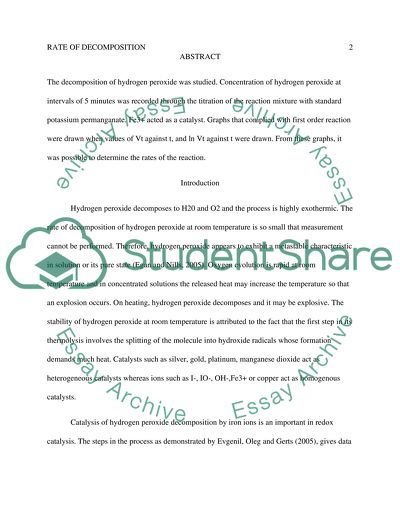RATEOFDECOMPOSITIONOFHYDROGENPEROXIDE Lab Report. Retrieved from https://studentshare.org/chemistry/1647470-rateofdecompositionofhydrogenperoxide
RATEOFDECOMPOSITIONOFHYDROGENPEROXIDE Lab Report. https://studentshare.org/chemistry/1647470-rateofdecompositionofhydrogenperoxide.


